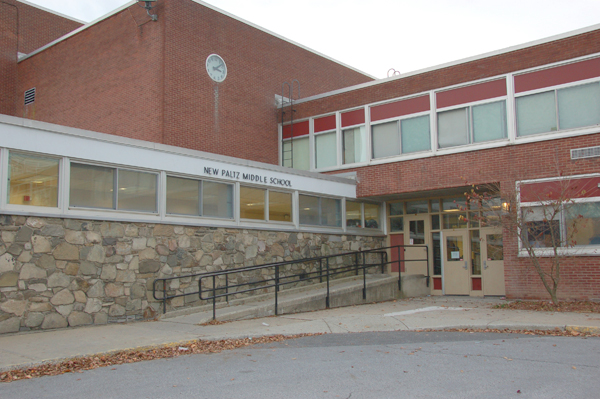

Members of the New Paltz Board of Education and the community came together on Wednesday, Nov. 30 for “Community Conversation,” a forum considering options for school consolidation and resource reallocation.
“I think that the board has put the [consolidation options] on the table as something that needs to be explored, and the point of tonight is to hear from the community about what they think about consolidation,” said K.T. Tobin Flusser, vice president of the board. “As a board member, we’re here to just sit back and listen. [To] show support, but it’s not about our voices tonight.”
The input given to board members will aid in the creation of a district-wide survey used for “comprehensive facilities planning,” according to information presented by Superintendent Maria C. Rice. This survey will be created in January 2012 and analyzed a month later.
Three options were considered, labeled A, B and C. Option A explored funds from the operating budget. The repairs needed for the four campus buildings – Lenape, Duzine, the middle school and high school – will come in the form of $15 million, dispersed over five years in increments of $3 million each year, according to the information presented.
Option A also calls for significant cuts “to the educational program” to offset repair costs, reduction in yearly energy usage, no state aid for the repairs and requires “voter approval via annual operating budget vote.” This plan intends to keep all four campuses.
Option B is based on “Repair/Renovation Bond(s),” according to the same information. This option calls for renovations to the four campuses to be done on a “coordinated schedule,” with vital repairs being done almost immediately. Other provisions to this option include state aid, a “high risk of unpredicted facility needs” and required voter approval for the bonds estimated at $12 to $15 million.
Option C explores consolidation where one to two campuses could be sold or shared at “historically low interest rates” and this “may reduce transportation and staffing,” according to the information presented. This option includes state aid and lower energy consumption.
Participants said if consolidation went forward, there is a concern with trying to balance student independence with safety. A member of the discussion, and a parent of a middle school student, was concerned that if the middle school moved to the high school campus, then there was a chance of bullying from older kids to younger kids.
Meanwhile Steve Greenfield, former school board member and participant of the discussion, mentioned that if the middle school moved, this could present a problem with bussing.
Board officials left an unofficial option spot open for community suggestions, while Rice reiterated that officials were only considering “big picture” issues at this time. She declined to answer questions about the tax cap and concerns about the fate of the middle school building. Rice did comment about the educational model.
“The educational program needs to drive our facilities, and I don’t think a single board member disagrees,” she said.
The “debriefing” post discussion sparked new ideas for the board to consider. The discussion broke into eight tables, each providing feedback. One table suggested reaching out to the senior community to let them know which options were available. Community members agreed some negative propaganda about the proposals had been circulating.
Town Supervisor-elect Susan Zimet was involved in the discussion and talked about the consequences of the community not a reaching a decision themselves.
“We have a state government that says we need to be consolidating – the goal is to force consolidation,” she said. “Make us a model community.”
Another discussion was geared toward exploring a multitude of options with voter approval. The input gathered at this forum will go towards creating a survey to be handed out in January.
“When the board starts making those decisions, and honing it down after they get the data from your surveys, and they start saying, ‘OK, these are the things that we’re going to investigate and look at, then you’ll have more data to be able to say I really don’t like that configuration,’”said Rice.
